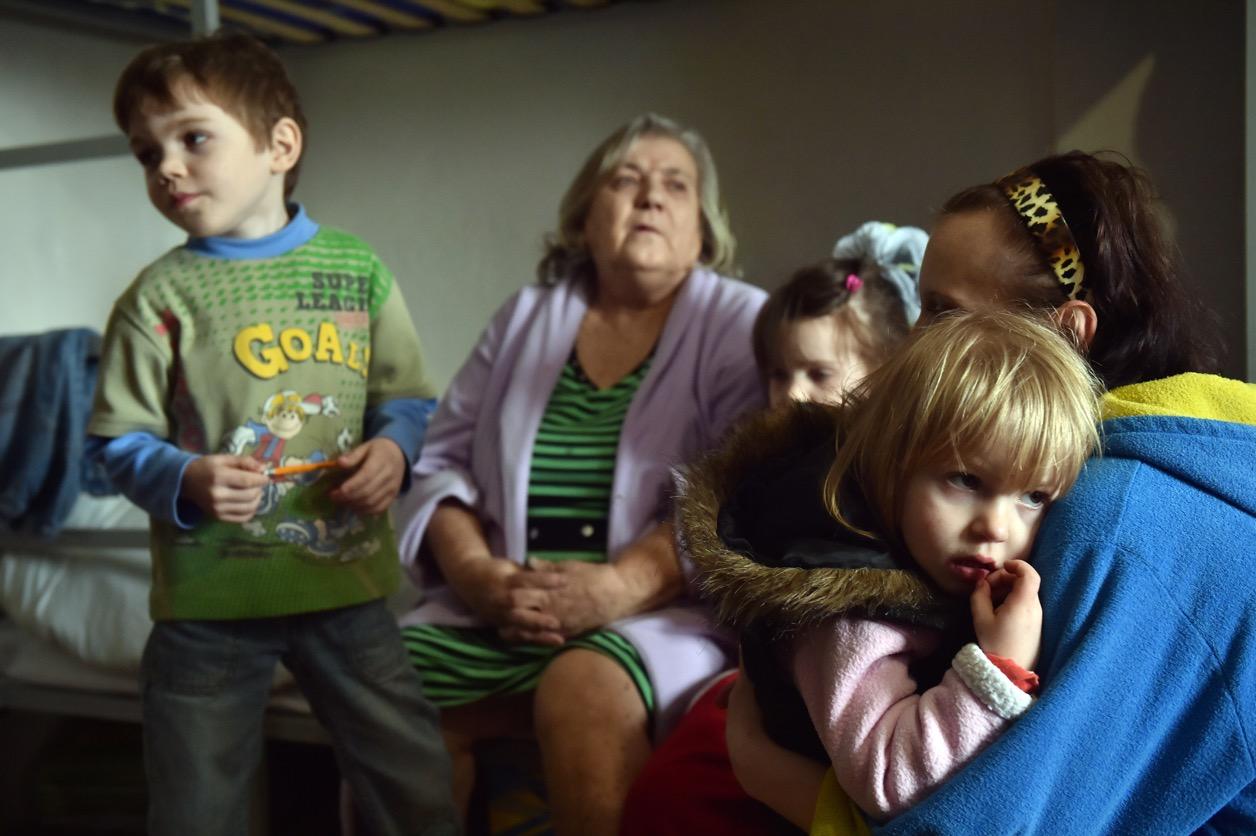Don’t forget about Europe’s other major migration crisis
A family from a city in the Donetsk region controlled by pro-Russia separatists sits in a center for displaced people in the eastern Ukrainian city of Slavyansk in March.
KYIV, Ukraine — There’s another European migration crisis out there, and it’s one you probably haven’t heard about in a while.
More than 2 million people have fled their homes in eastern Ukraine since government troops and Russian-backed separatists went to war last year.
Hundreds of thousands of residents have sought refuge next-door in Russia. But most of those who've escaped their hometowns — more than 1.4 million — remain in Ukraine as internally displaced people, or IDPs, according to the United Nations.
Fighting has calmed down from its latest peak earlier this year. Meanwhile, images of Europe’s refugee crisis in global media have replaced those of eastern Ukraine’s destruction and despair.
More from GlobalPost: How social media transformed the image of a drowned Syrian child into an iconic symbol
In reality, though, Ukraine has the world's ninth largest displaced population, according to the UN.
“In many senses, Ukraine’s emergency looks ‘invisible’ or ‘hidden’ for outsiders,” said Nina Sorokopud, regional information officer for the UN Refugee Agency (UNHCR).
That’s because the vast majority of displaced people from the war-torn Donetsk and Luhansk regions have been accepted into homes and other private communities across Ukraine, Sorokopud said in an email. Only 5 percent are housed in official IDP shelters, she added.
But in nearly every corner of Europe’s second-largest country, many displaced are still struggling to get back on their feet after fleeing their homes.
The government is struggling, too: Not only was the country’s military ill-prepared to fight the war out east, but officials were also poorly equipped to manage the mass internal migration.
Volunteer groups have stepped in to shoulder the burden, providing logistic and material support for the displaced, in addition to housing. But they say the authorities should be doing far more, starting with basics like accommodation and employment.
“Displaced persons have stopped relying on the government for the kind of assistance it should be giving, and for the most part, they’re acting independently to provide for themselves,” said Alexander Gorbatko, the director of a volunteer group that helps IDPs.
More from GlobalPost: Violence flares in Ukraine’s capital just as it’s easing up in the east
The challenges have only increased with the end of summer. Displaced students — there are more than 184,000 displaced children in total, according to government statistics — are faced with “a lack of available places in schools,” the UN says.
That’s in addition to difficulties seeking out long-term and properly winterized housing. Temperatures here average below 20 degrees Fahrenheit in January and February.
The most daunting part, though? IDP numbers are steadily growing, with more than 58,000 having left the east during the last month alone, according to the UNHCR.
“If earlier, people were leaving [separatist-controlled territory] on a temporary basis, just to wait it out until the war ends, now they’re leaving for the long-term,” Gorbatko said.
Our coverage reaches millions each week, but only a small fraction of listeners contribute to sustain our program. We still need 224 more people to donate $100 or $10/monthly to unlock our $67,000 match. Will you help us get there today?
